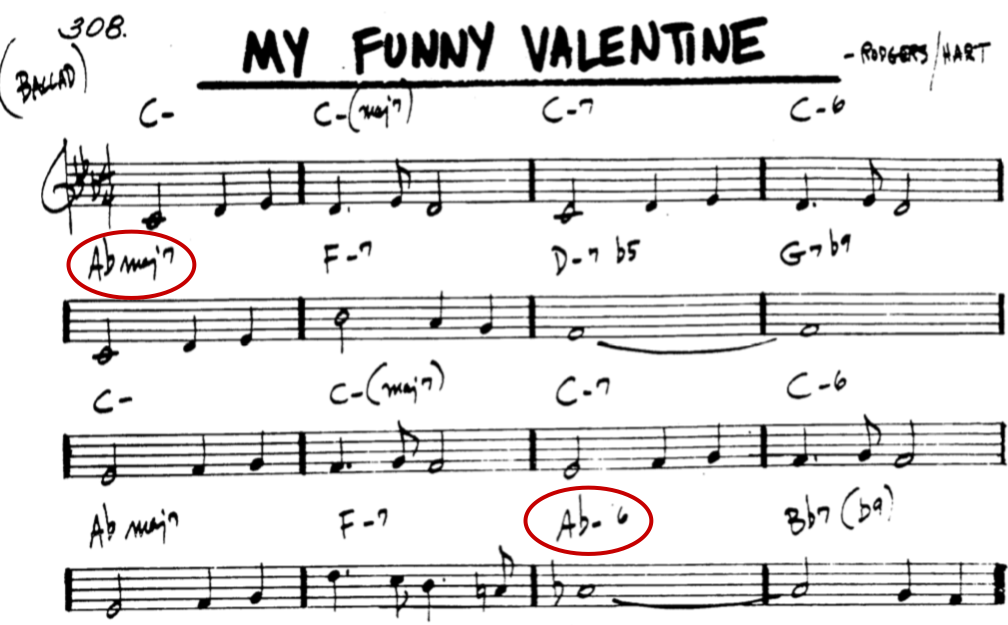Chord Ambiguity
In previous lessons we have already discussed:
- That chords are ambiguous;
- That lead sheets often contain mistakes.
The combination of these two facts result in something called ‘disguised chords’.
Disguised Chords
Disguised chords are two chords that share all the same notes, but have a different root note. This means one of these can ‘disguise’ the other in a chord progression. For example:
- C6 = C E G A
- Am7 = A C E G
For example, take the chord progression:
CMaj7 | Dm6 | E7 | C6 ||
On the surface this looks like a bit of a strange chord progression. Some kind of I-ii-III7-I? But, I’m sure you won’t be surprised to learn given the title of this lesson, some of these chords are disguised. Specifically:
- Dm6 = Bm7♭5
- C6 = Am7
So removing the disguise of each of our chords, this chord progression is really a:
CMaj7 | Bm7♭5 | E7 | Am7 ||
Which is just a I in C Major, followed by a ii-V-I in A minor. Indeed, if you were to play the above progression, it sounds like a 2-5-1 (rather than some other non-standard progression). The reason for this has to do with functionality, which we discussed in a pervious lesson. Note that a disguised chord is just an inversion of ‘true’ chord. And that they are often 6 chords (a 6 chord is a 2nd inversion of a 7th chord).
Example
As an example, some versions of My Funny Valentine have the following progression:

First, let’s look at the A♭m7. This may look a bit strange at first, until you realise that it’s really just a disguised Fm7♭5, creating a minor ii-V in E♭ min (but resolving to the E♭Maj7 chord).
Similarly, looking at the first 5 bars we see we have the progression:
Cm | CmMaj7 | Cm7 | Cm6 | A♭Maj7 |
Notice that in this progression the top note of the chord simply moves down by a semitone for each chord: C – B – Bb – A. This is called a line cliché. But notice also that A♭Maj7 in the first inversion is a Cm♭6 chord. If we play it like this then we have the top note move down another semitone to A♭. So, at least in my mind, that fits this particular chord progression better. It has smoother voice leading. We just continue the pattern of moving the top note down by a semitone. But a Cm♭6 chord looks a bit weird and is less common than a A♭Maj7 chord. So, this lead sheet went with an A♭Maj7 instead.
Beware Disguises
So when you’re analysing chord progressions keep disguised chords in mind. If a particular chord doesn’t seem to quite fit the progression, try rearrange the notes to create a simpler, more common or standard chord progression – like a 2-5-1. And listen to it. Play it and listen. If something sounds like a 2-5-1, it probably is a 2-5-1, even if the chord symbols used tell you something else.